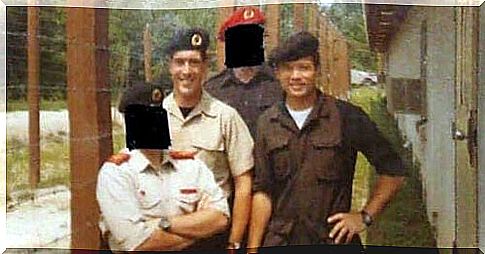Using Psychology Against Terrorism: Guantanamo

When psychologist James E. Mitchells testified in a military court about Guantanamo, many were concerned. There had been talk of using psychology against terrorism, and Mitchell not only admitted that he used his knowledge to torture prisoners, but said he would do it again.
Let’s go back a bit and remember how popular the fight against terrorism became after the 9/11 attacks. These attacks were a declaration of war, especially against unregulated armed groups in the Middle East.
This situation developed into, among other things, the US invasion of Afghanistan. The members of these groups were arrested and sent to Guantanamo Bay Navy Base. First through Wikileaks, and later through several other media, the public became aware of the torture to which prisoners at Guantanamo were subjected, with the help of psychologists.

Two psychologists in Guantanamo
It all started with the infamous The Manchester Manual . This was a guide for Al Qaeda supporters who told many things, such as how to lie during an interrogation. Psychologists James E. Mitchell and Bruce Jessen analyzed this document and sent it to US authorities.
All indications are that they made a case for the ability to handle Al Qaeda’s interrogation methods. Thereafter, they both worked as psychologists and instructors in the Survival, Evasion, Resistance and Escape program, also known as SERE, from the US Air Force.
They taught American soldiers to resist torture if they were taken prisoner in an armed conflict. After analyzing “The Manchester Manual”, their job changed. Now they had to use psychology against terrorism to interrogate prisoners.

Indecent use of psychology against terrorism
Mitchell and Jessen are expert psychologists behind the torture in Guantanamo Bay. But if you look closely, they used ancient barbaric methods to justify their psychological theory.
According to them, they used the theory of learned helplessness. This theory, presented in 1967 by psychologist Martin Seligman, refers to the punishment that causes a person to learn to be submissive to an attacker. In short, the learned behavior that they can not overcome the attacker.
Mitchell and Jessen interpreted this theory and created what they called improved interrogation techniques. These techniques consisted of systematic physical abuse, keeping the prisoner isolated and not letting them sleep or eat. All meant to break down their will. This was not seen as innovative, but sadistic.

A dangerous precedent
These two psychologists did not speak the language of the prisoner, but they were personally involved in the torture. They performed procedures such as drowning and blows to the head for several hours. The most terrible thing is that they did not get what they wanted. Many prisoners resisted and did not speak.
In the Guantanamo Bay trial against five prisoners, Mitchell was called as a witness, but is not charged with anything. Together with his colleague Jessen, he earned more than 81 million dollars for his work. They both have a clause in their contracts that protects them with $5 million against possible lawsuits against them. However, these trials will not take place because the Guantanamo Bay case is shrouded in total impunity.
It is a dangerous thing that the world’s greatest powers stimulate and encourage this type of brutal practice. There is also one more dangerous thing about the Guantanamo case: using psychology to inflict torture.









